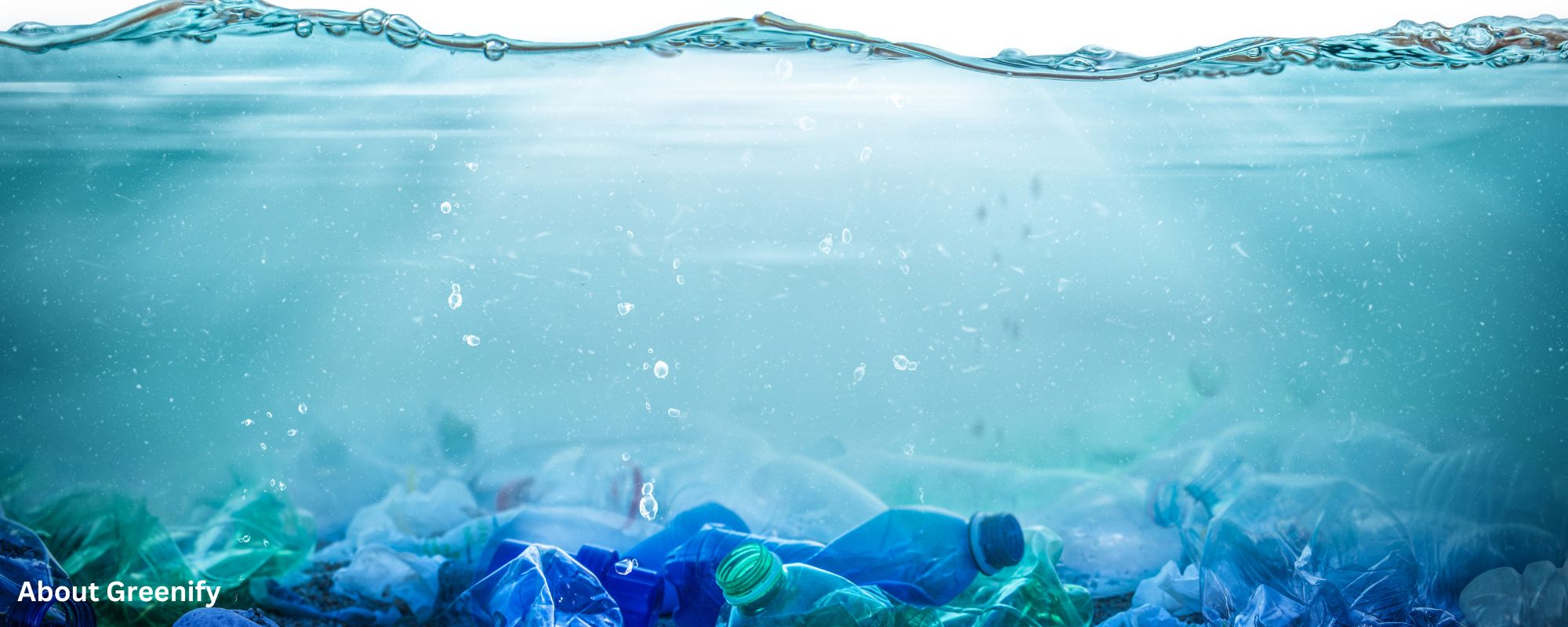Plastic is known to be the most infamous cause of oceanic pollution. Making up for about 80% of all the marine debris and guilty of killing tens of thousands of marine species.
As a non-degradable substance, it can take thousands of years to decompose, and that too not fully. In fact, according to the EPA, the Environmental Protection Agency, 100% of all the plastic that has ever been made is still existent in some form or another. All the plastic that has ever been created is still there!
And even if it decays, it turns into tiny particles called “micro-plastic” which causes further damage to human health, wildlife, and entire ecosystems with no prejudice.
Although there have been significant initiatives as of late to save the ocean, with the Clean Oceans Initiative being the largest, there is an urgent need to address our contribution.
Believe it or not, the majority of the plastic present in the oceans is caused by our own littering and waste production. More than 5 trillion pieces of plastic are floating around in the oceans as we speak and about 8 million are added into it every day.
In case you think your household has no contribution, think again. As a common material of choice for many purposes, plastic can be found in a vast array of day-to-day stuff.
Regardless of the sources, the crux of the matter is that most of the plastic ends up as waste and eventually makes its way to the oceans as all things do.
To reduce your share of plastic waste, here’s what you can do:
1. Minimize the use of plastic
There is no better way to reduce the amount of plastic waste than not using it in the first place.
The reality is far from it though. That is, since the 1950s, the production and applications of plastic have only boomed with no signs of slowing down. All the while increasing the amount of plastic waste that is generated in the process.
Sadly, half of all the plastic on the planet has been produced in the last thirteen years alone despite all the efforts to control its production and use.
Moreover, most of the plastic that we use is single-use only, meaning it cannot be recycled or used again. So if you were to use a plastic-made product, make sure that it is reusable and not simply meant to be discarded.
2. Practice maximum recycling when possible
Speaking of reusability, you must know by now that not all waste plastic can be recycled.
Needless to say, there is an urgent need to adopt better practices that emphasize on moving away from disposable materials to reusable ones.
Materials such as paper, wood, algae, glass, and stainless steel are some of the better alternatives to products made of single-use and non-recyclable plastic.
3. Say No to products that use “microbeads”
Apart from the usual micro-plastics and other toxic chemicals that it releases into the air (even upon burning), many of the personal care items such as cosmetics and detergents also contain high amounts of small particles of plastic known as “microbeads” or “microspheres”.
As insignificant as they may sound, microbeads have become a major concern for environmentalists as they can easily enter the waterways and the oceans through our sewer systems and water waste.
To keep that under check, avoid using such products and excess outflow of water.
4. Support firms and policies that are anti-plastic
While individual efforts are certainly necessary to limit the use of plastic, no amount of it would be enough unless strict policies and legislation are put into practice.
Thankfully, there are dozens of initiatives that you can support or join in whether directly or indirectly.
Among them include all the local, national, global, government, and private institutes or solutions that aim at reducing the production of plastic and its waste management.
Some of the leading anti-plastic legislation already in work include the UN Environmental Assembly Global Plastic Treaty of 2022 and bans across many countries against single-use plastic (SUP).
Or the US Pollution Act of 2021 as the largest producer of plastic waste compared to any other country in the world.
5. Participate or volunteer in beach or ocean clean-ups
Should you feel incapable of changing the course of politics, you can always do your bit by doing little things such as participating or volunteering in groups that organize ocean and coastal cleanups.
You can also involve your friends and family in the endeavor without having to spend a lot of time and resources.
Or you can do it on your own. Just go to a nearby beach or waterway and remove any plastic waste that you see lying here and there.
6. Spread awareness about the dangers of plastic
Empower yourself and then others about the consequences of using too much plastic as it can help big time in getting the situation under control.
Report those who violate the rules and laws that govern the use of plastic. (Albeit a daring task, nonetheless essential given the inevitable dangers of plastic in the world around us).
So make no mistakes, if we aren’t careful enough, that day will not be far when the amount of plastic waste crosses its threshold and starts eating the planet from the inside out. Putting an end to our favorite slogan “Save the earth” once and for all.
Final Take
We all are aware of the diabolical nature of plastic as it just does not die and harms nature every step of the way. Even its last remnants are harmful enough for Mother Nature in one way or another.
Therefore, to save the ocean from plastic, the simplest way is to reduce, minimize, and gradually stop its use and further production as soon as we can.
